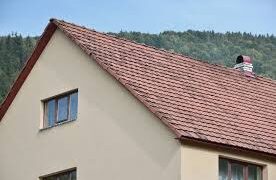In 2019, motor vehicle thefts in the United States caused a staggering $6.4 billion in losses. In that year alone, an estimated 721,885 theft cases got reported throughout the country.
Leaving your car parked outside is one sure way to attract the attention of car thieves.
However, criminals can also take advantage of a faulty garage door to commit their crimes. Your entire home can even be at risk if you have an attached garage. That should be enough reason never to let your garage door go into disrepair.

Fortunately, you can conduct DIY repairs on some minor garage door issues. We’ve rounded up the top ones you can do on your own and with a partner, so be sure to read on.
Pre-Repair Must-Dos
Garage door springs are tiny but mighty, with each one having a spring rate of about 100 pounds of force. A garage door that operates well allows for the gradual release of spring tension. If the springs or the whole door itself is in poor condition, those springs can pop out and ricochet with a lot of force.
So, before you tinker with your garage door, be sure to wear proper personal protective gear. If you have a helmet, use that, but if you don’t, you should at least wear goggles and a protective face shield. Wear thick working gloves, too, to protect your hands from potential cuts or bruises.
Track Repairs
Most residential overhead garage doors rely on standard lift track systems. They come with a vertical track fastened to the wall and a horizontal track mounted from the ceiling. The tracks themselves are metal rail-like components in which the garage door moves.
Proper track alignment allows for the smooth movement of garage doors. The vertical track should always be exactly plumb. The horizontal one should be slanting slightly down toward the door’s backside.
Tracks that get bent, crimped, dented, or misaligned can give rise to issues like wobbly or noisy doors. Crooked tracks can also be a result of loose track mounting hardware. Therefore, the tracks are some of the first things you should check if your door shakes or makes a racket.
A minor garage door repair you can do for faulty tracks is to tighten all their fasteners. Ensure all bolts, nuts, and screws are secure and as flush to the surface as possible. You can also use a rubber mallet to straighten out small dents or crimps on the tracks.
Roller Repairs
Garage door tracks guide the door’s movement, but it’s the rollers that actually make the door move. Each roller consists of a wheel and a metal rod located inside the tracks. Together, garage door rollers allow the door to move up and down (or sideways) on the tracks.
Corrosion and debris build-up can make the rollers catch as they move. Moreover, severe wear and tear can give rise to jerky or even completely stuck rollers. Misalignment or lack of lubrication can also result in a wobbly, rickety garage door.
If any of those happen to your garage door, take a closer look at the rollers inside the tracks. Use a brush to remove grime and filth accumulation. You can also use silicone spray oil on the bearings of metal rollers.
If you find that part of the roller is missing (such as a rusted out or broken-off piece), it’s time for a replacement. Don’t worry, as rollers are some of the most affordable and widely available DIY garage door parts. Today’s rollers cost less than $5 a pop, but they can last for more than a decade.
Chain Repairs
Chain-driven garage door openers rely on a metal chain that lifts and lowers the door. The chain itself has some slack in it to keep premature wear and tear at bay. However, if yours is too loose, you most likely have a detached chain.
Chain detachment can cause a chain-driven door to make grinding or squeaking noises. You may also hear loud smacking sounds, which can be due to the chain slapping against the rollers.
If you’re experiencing such garage door woes, the first thing to do is to check your owner’s manual. Look for information on what the chain tension should be and how to adjust it.
Since the chain is overhead, you need a stable and secure ladder or platform to inspect and fix its issues. It’s best if you have a partner who can help stabilize the ladder. Once you’re up there, follow your manual’s instructions on adjusting the chain.
Bottom Seal Replacement
Sealing air leaks in old or drafty homes can save over 20% on heating and cooling energy bills. If you have an attached garage, a faulty garage door seal can be a prime source of air leaks. Those gaps allow air from outside to enter while also letting conditioned air escape.
Replacing the bottom seal of your garage door can also keep pests and vermin from entering your home. Those gaps can be big enough to allow rodents, which harbor at least 70 diseases, to gain access to your home.
Weatherizing the garage door with a new seal is fairly simple but best done with a partner. You guys first need to remove the faulty seal and clean the bottom part of the door and the concrete. You can then install the new seal as directed by the manufacturer.
Time To Repair Your Garage Door
As you can see, some garage door repairs are DIY-able, so long as you have the right garage door parts and tools. The most important thing is not to delay fixing it, as issues can give rise to pest infestations, or worse, crimes. Don’t forget to gear up, and if possible, always DIY these repairs with a reliable partner.
Interested in more ideas to enhance your home’s livability, safety, and security? Then be sure to check out our other home improvement tips and guides!




